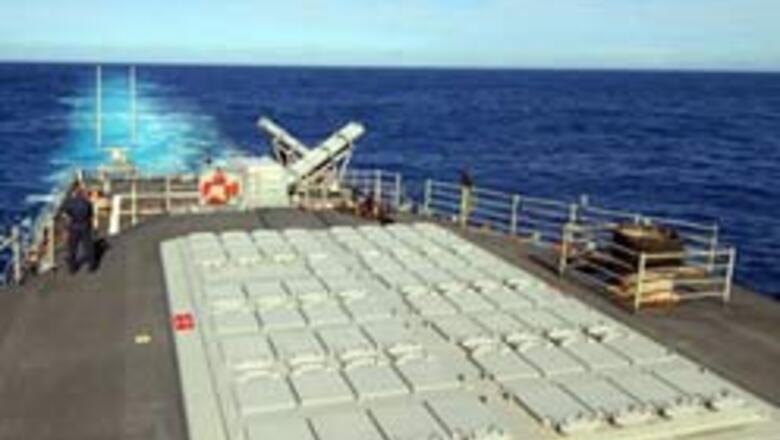
views
Washington: A Navy heat-seeking missile is getting its first real-world use in an attempt to demolish a crippled US spy satellite before the orbiting craft falls back to Earth.
The targeting of the satellite — which could come Wednesday night — is not the mission for which this piece of the Pentagon's missile defense network was intended.
The attempted shootdown, already approved by President Bush out of concern about toxic fuel on board the satellite, is seen by some as blurring the lines between defending against a weapon like a long-range missile and targeting satellites in orbit.
The three-stage Navy missile, designated the SM-3, has chalked up a high rate of success in a series of tests since 2002, in each case targeting a short- or medium-range ballistic missile, never a satellite.
A hurry-up program to adapt the missile for this anti-satellite mission was completed in a matter of weeks; Navy officials say the changes will be reversed once this satellite is down.
The government issued notices to aviators and mariners to remain clear of a section of the Pacific Ocean beginning at 10:30 p.m. EST Wednesday, indicating the first window of opportunity to launch an SM-3 missile from a Navy cruiser, the USS Lake Erie, in an effort to hit the wayward satellite.
Having lost power shortly after it reached orbit in late 2006, the satellite is out of control and well below the altitude of a normal satellite.
The Pentagon wants to hit it with an SM-3 missile just before it re-enters Earth's atmosphere, in that way minimizing the amount of debris that would remain in space.
Left alone, the satellite would be expected to hit Earth during the first week of March. About half of the 5,000-pound spacecraft would be expected to survive its blazing descent through the atmosphere and would scatter debris over several hundred miles.
Adding to the difficulty of the shootdown mission, the missile will have to do better than just hit the bus-sized satellite, a Navy official said Tuesday.
It needs to strike the relatively small fuel tank aboard the spacecraft in order to accomplish the main goal, which is to eliminate the toxic fuel that could injure or even kill people if it reaches Earth.
The Navy official described technical aspects of the missile's capabilities on condition that cannot be identified.
Also complicating the effort will be the fact that the satellite has no heat-generating propulsion system on board. That makes it more difficult for the Navy missile's heat-seeking system to work, although the official said software changes had been made to compensate for the lack of heat.
The Pentagon press secretary, Geoff Morrell, said Defense Secretary Robert Gates was briefed on the shootdown plan Tuesday by the two officers who will advise him on exactly when to launch the missile — Gen Kevin Chilton, head of Strategic Command, and Gen. James Cartwright, vice chairman of the Joint Chiefs of Staff, who held Chilton's post until last summer.
China and Russia have expressed concern at the planned shootdown, saying it could harm security in outer space. At the State Department on Tuesday, spokesman Sean McCormack told reporters that the US action is meant to protect people from the hazardous fuel and is not a weapons test.




















Comments
0 comment